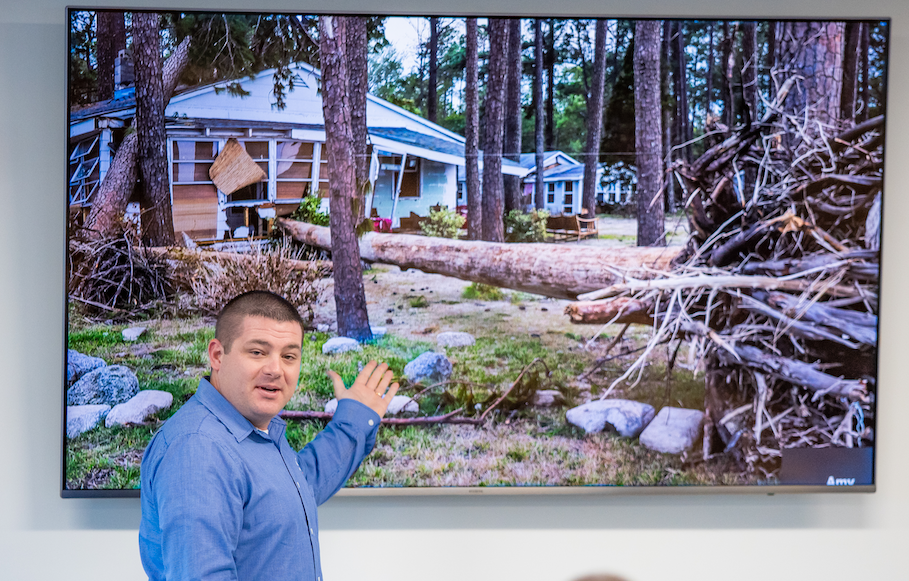Before and after the storm

Be cautious even when the coast seems clear
The thunder, the lightning and the high winds are over, and so is the danger. Right?
Wrong. Once storms pass, their aftermath can be just as dangerous as what came before. Kentucky’s electric cooperatives know that hazardous conditions occur during the storm recovery period. Keeping your distance from downed power lines and knowing what to do if you see one are the first steps to safely recover from a storm.
Rule No. 1: Assume all downed power lines are live (or any downed lines). You cannot gauge their status by looking at them—they do not have to be sparking or arcing to be hot. A downed power line could be making contact with tree limbs, vehicles and puddles, so keep a distance of 35 feet. The consequences of coming in contact with a live wire could be serious injury or death.
“Large overhead power lines can carry more than 700,000 volts of electricity,” says Wes Poynter, safety compliance coordinator for Nolin RECC. “Fatalities can occur when someone comes in contact with a live wire of only a couple hundred volts.”
Why you should NOT try to rescue someone
Do not try to rescue someone who has already made direct or indirect contact with a power line. “Don’t touch the victim—you could become energized if you do,” says Poynter. “Immediately call 911 for assistance, stay clear of the area, and contact the local electric utility to turn off the power.”
Likewise, Poynter says, don’t touch any object, like a car or equipment, that has been in contact with a downed line (see box below). Never try to move a downed power line or anything else in contact with it by using another object, such as a broom or stick. “Even nonconductive materials like wood or cloth can conduct electricity if slightly wet,” Poynter says.
More don’ts
Do not touch or step in water near downed lines. Be alert for downed lines that might be hard to see in puddles, streams and debris. And of course, keep children and pets away from the area where electric lines have fallen.
It’s not just the electrical wires to avoid: storms also may damage other utility wires, like cable or telephone lines. If those are sagging or down, they could come in contact with an energized power line, making them dangerous, too.

